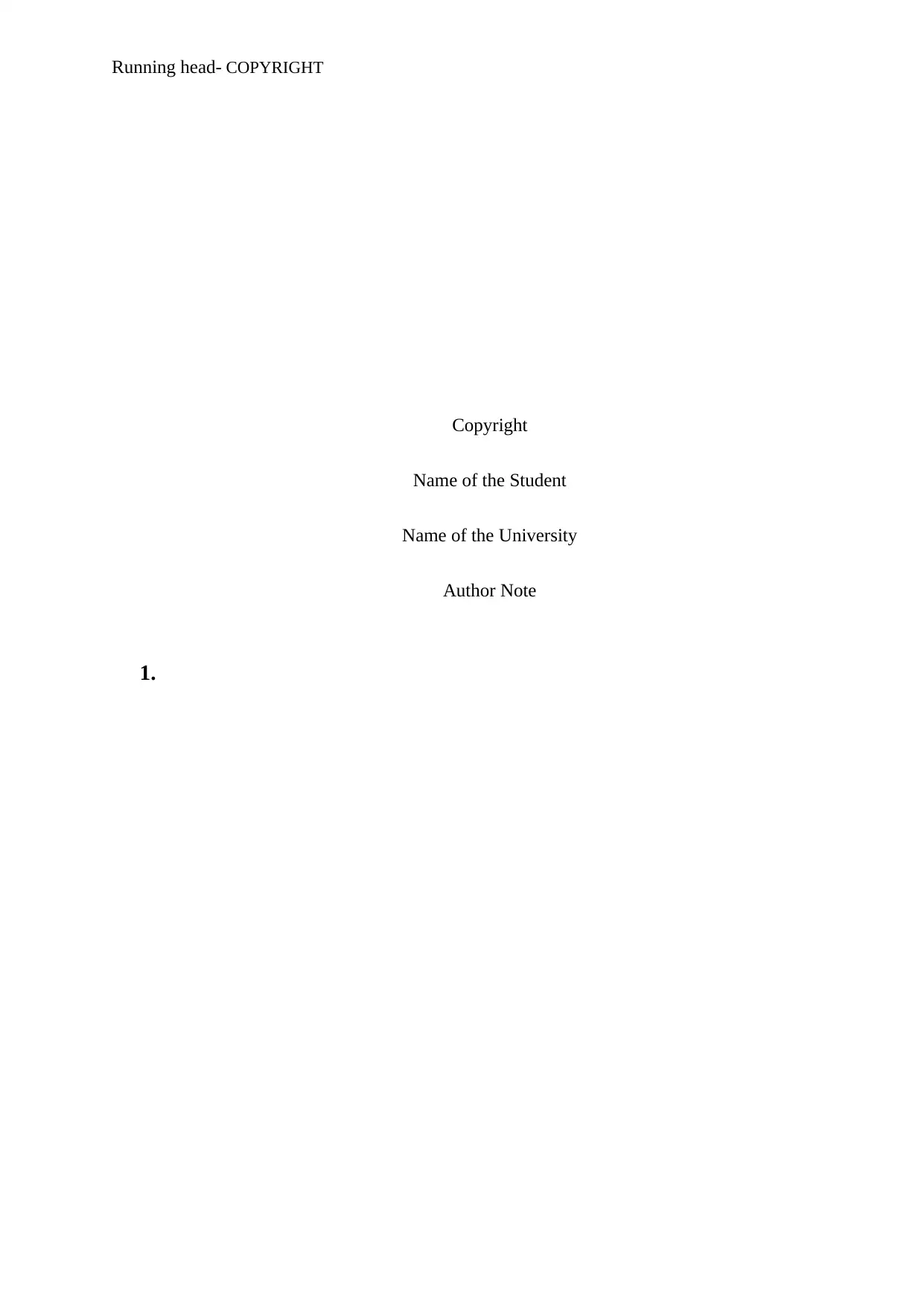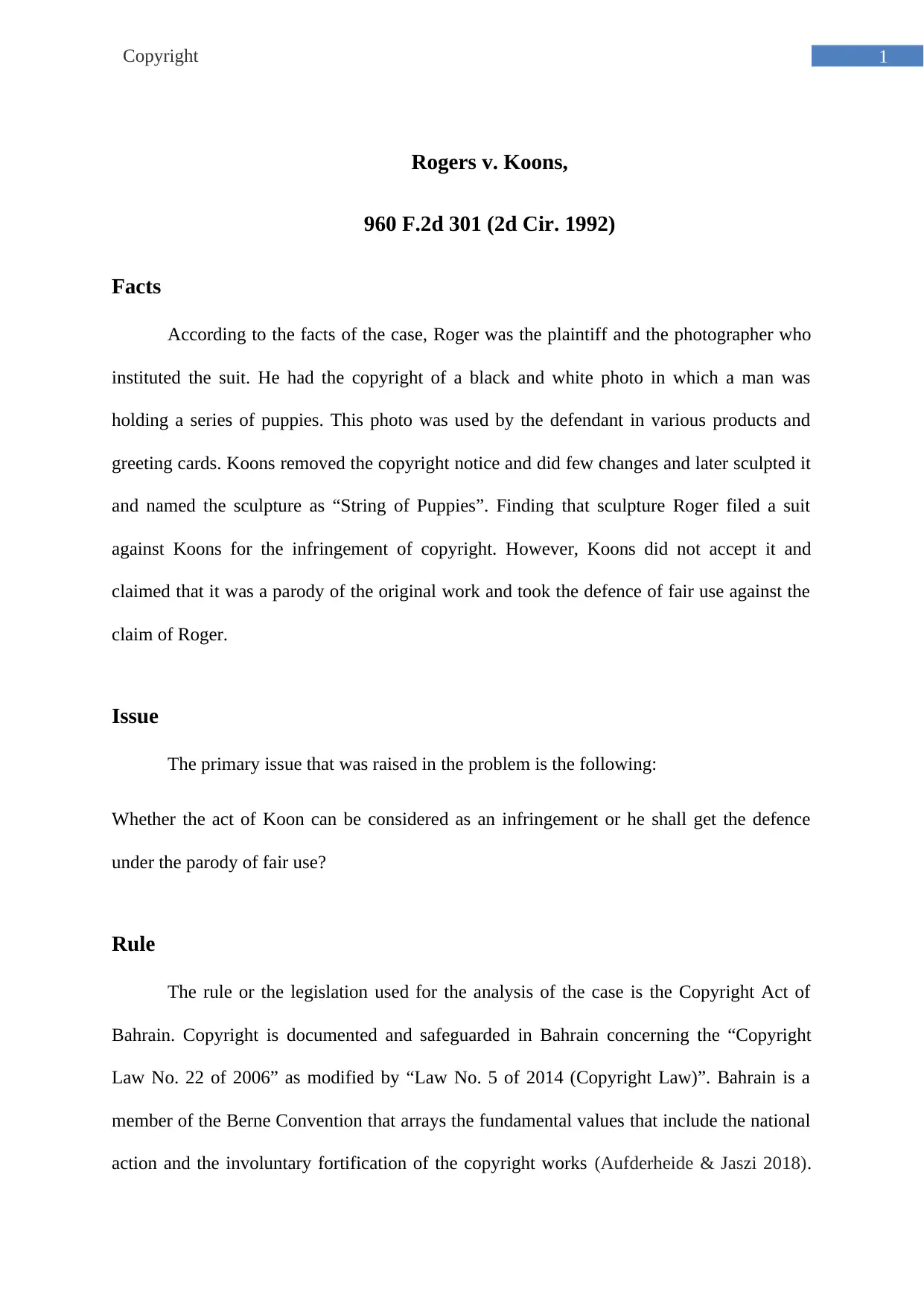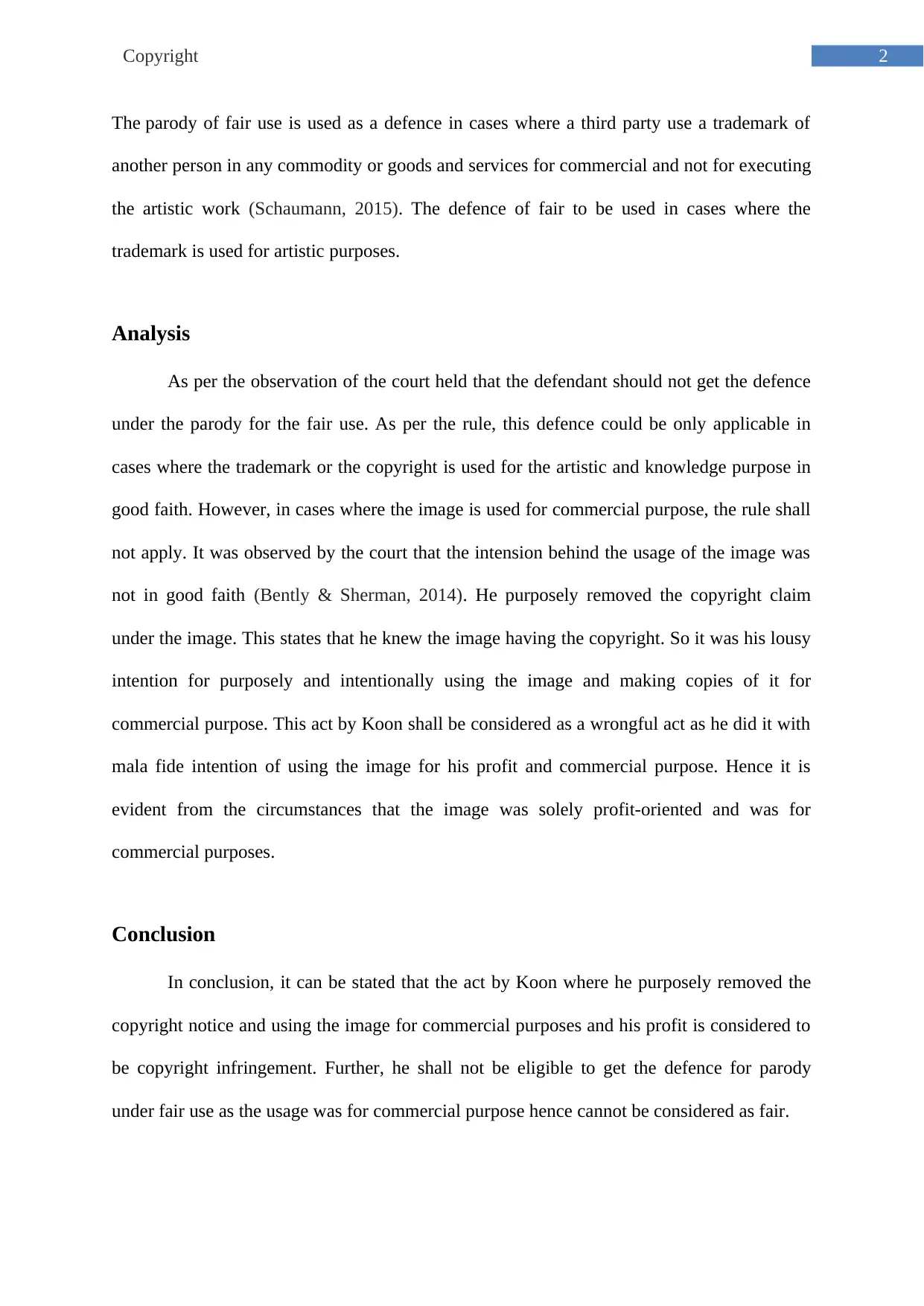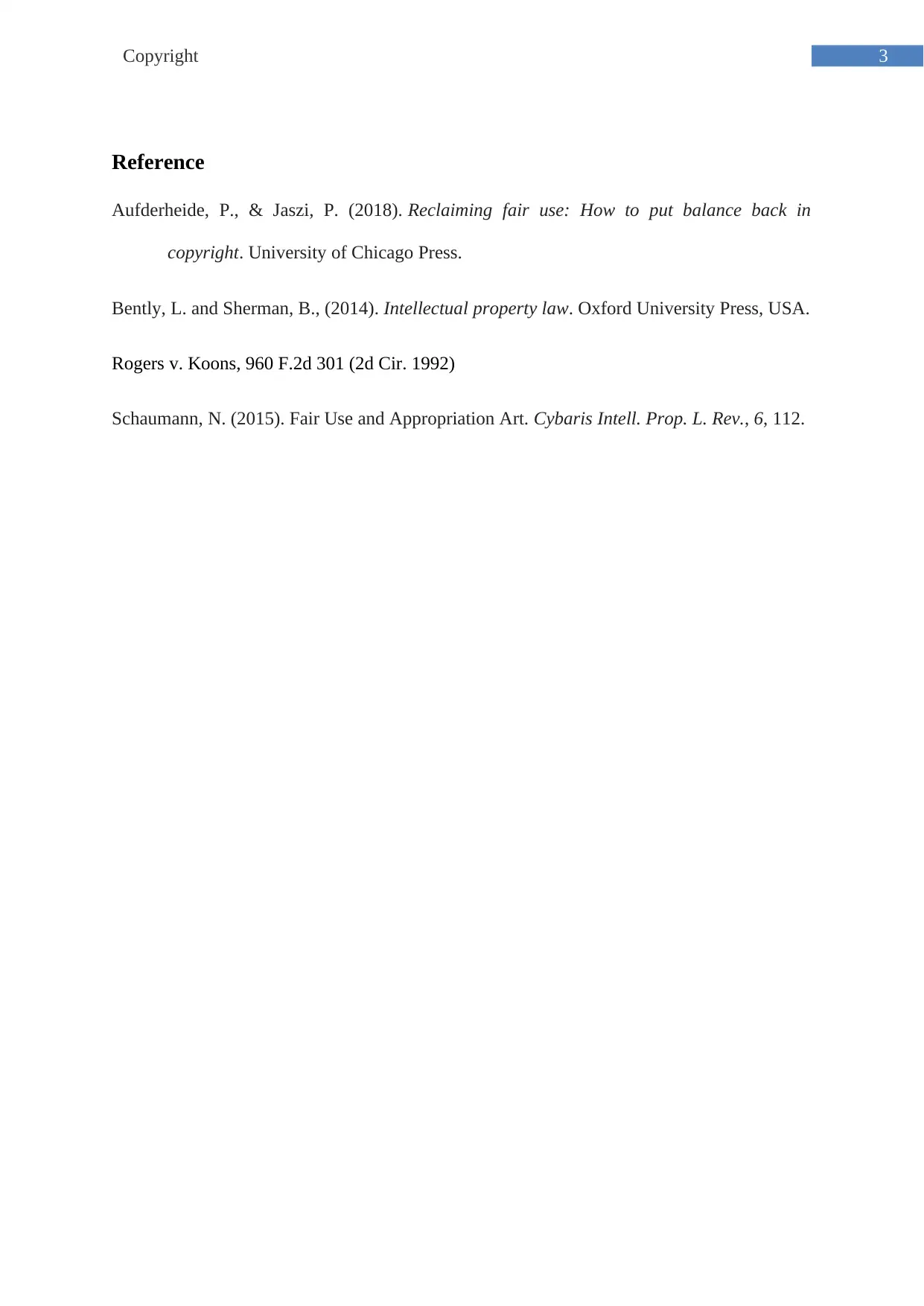A Detailed Analysis of Copyright Infringement in Rogers v. Koons Case
VerifiedAdded on 2022/07/28
|4
|698
|27
Case Study
AI Summary
This case study analyzes the copyright infringement case of Rogers v. Koons, focusing on the legal arguments presented and the court's decision. The case involves a photographer, Rogers, who sued Koons for copyright infringement, claiming Koons used his photograph in a sculpture without permission. The analysis explores the issue of whether Koons's actions constituted infringement or qualified as fair use, specifically a parody. The assignment references the Copyright Act of Bahrain, highlighting the country's adherence to the Berne Convention and its laws regarding copyright protection. The court's analysis centers on whether Koons's use was in good faith and whether it served a commercial purpose. Ultimately, the court ruled against Koons, determining that his use was for commercial gain and not a legitimate parody under fair use principles, thus constituting copyright infringement. The conclusion reinforces the importance of respecting copyright and the limitations of the fair use defense when commercial intent is present.
1 out of 4






![[object Object]](/_next/static/media/star-bottom.7253800d.svg)